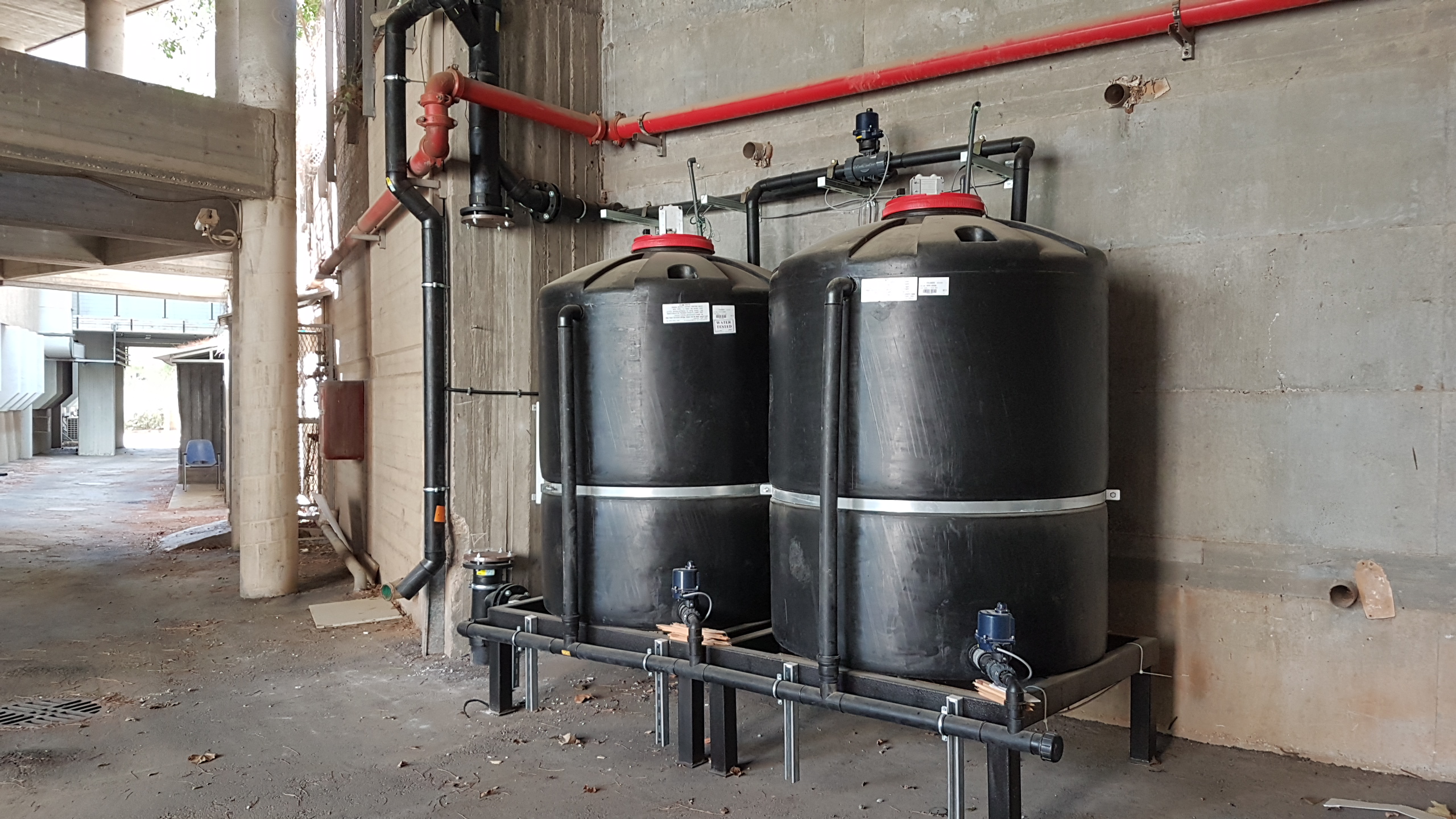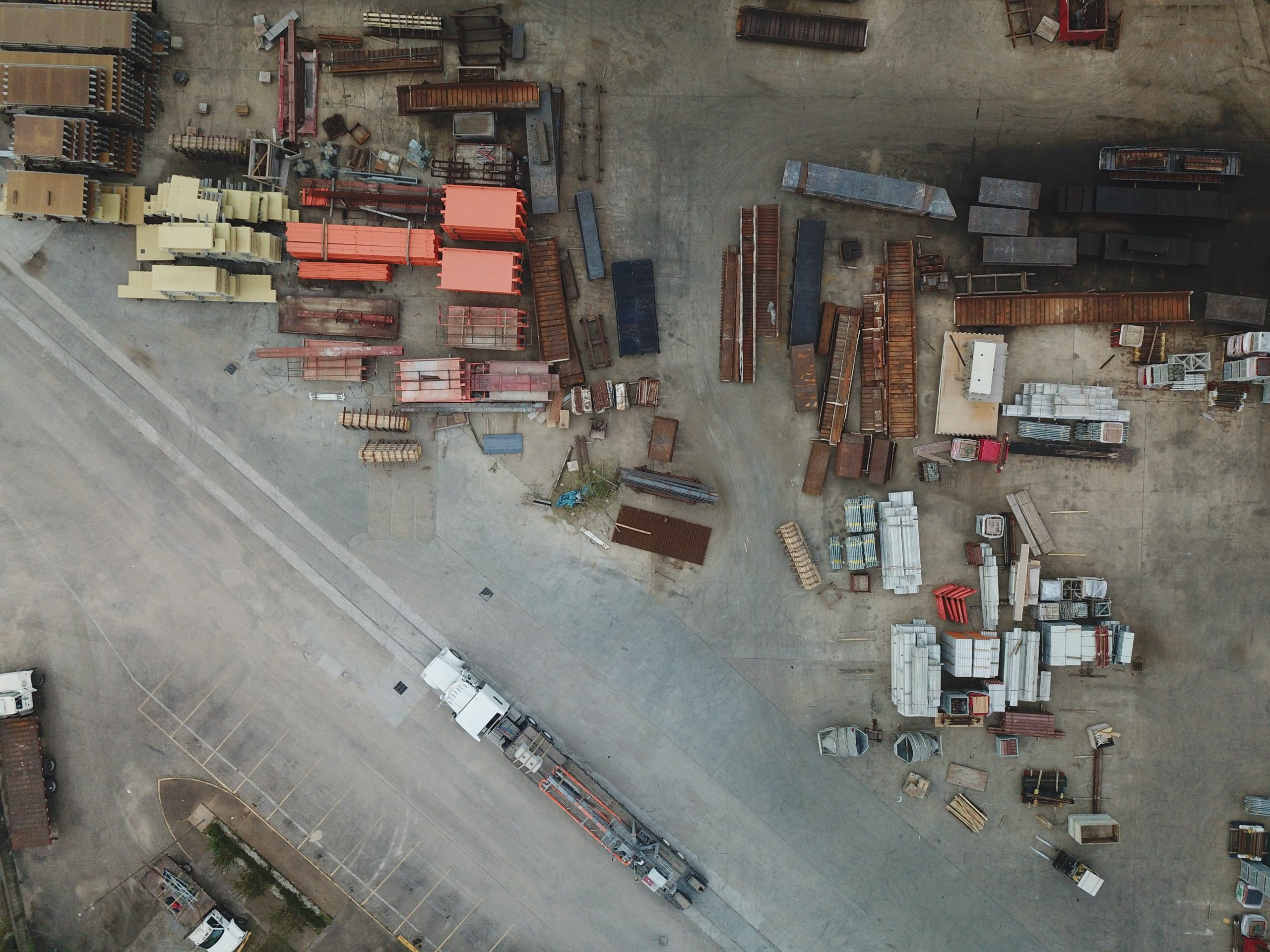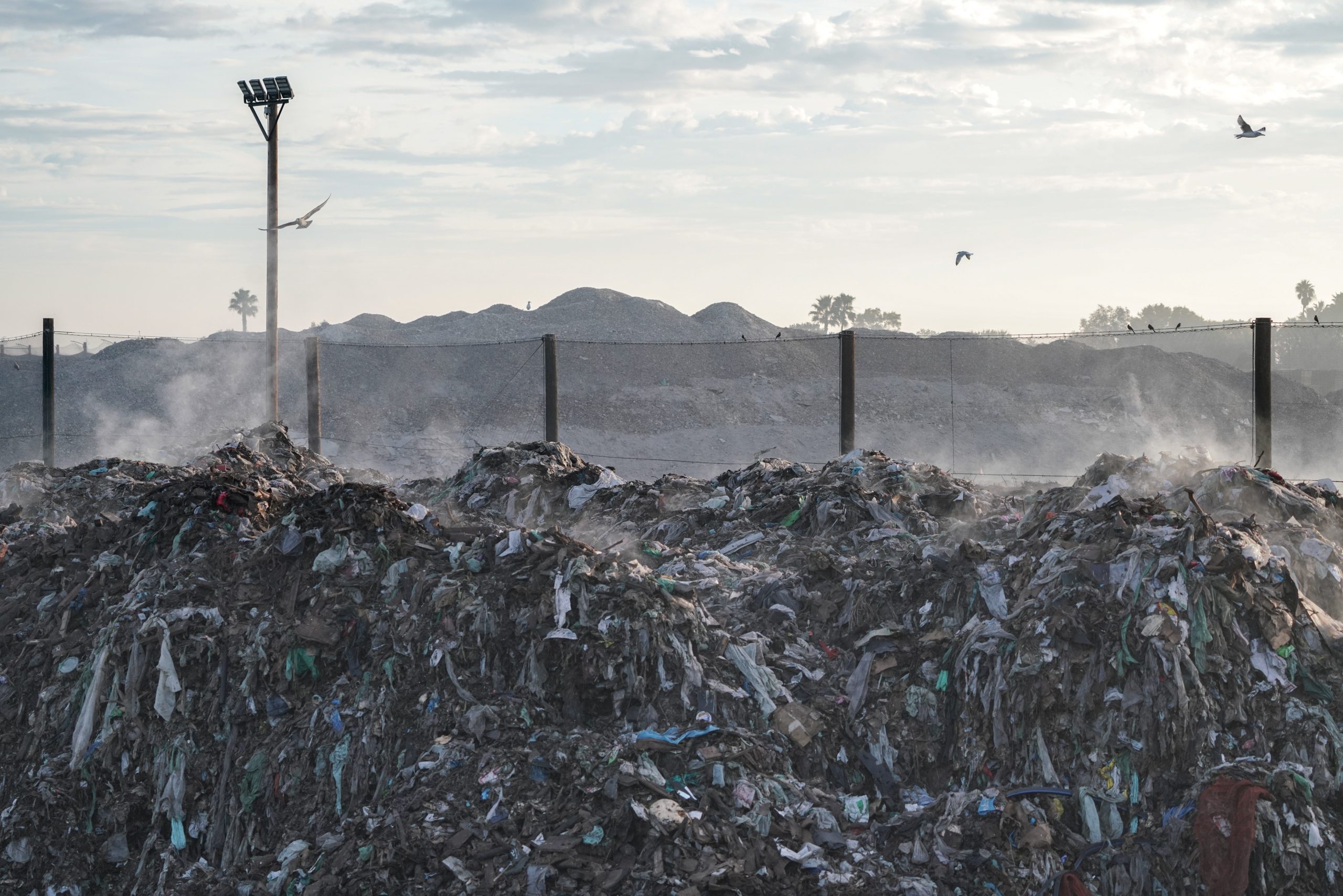The Answer is Blowing in the Wind
March 27, 2023A new Israeli invention facilitates water desalination, using a unique wind turbine with a vertical rotation axis, that works without electricity. This invention answers the problem of the vast energy consumption of the current desalination process and could allow residents of isolated communities to enjoy fresh water
In Israel, the sea almost literally flows into our taps. We Israelis pride ourselves on the achievements of our country in the field of desalination, with 5 desalination plants spread across the Israeli shores of the Mediterranean, which produce drinking water equivalent to about 75% of the national domestic water consumption, and 2 more facilities to be built in the coming years.
A perfect solution for a desert country? Perhaps, yet everything comes with a cost: to make seawater or brackish water drinkable, the desalination plants in Israel consume a lot of electricity. A new invention, recently presented at the 5th biannual student conference of the Grand Water Research Institute (GWRI), tries to solve this energy problem, and might even create a revolution in the availability of desalinated water worldwide. This invention by the Technion researchers consists of a unique wind turbine, that does not require any electricity for it to run, and is cheap and easy to use and maintain.
Enter the vertical axis wind turbine
The electric energy consumed today by desalination processes stands at about 3.5 kilowatt-hours (kWh) for each cubic meter of water. For the sake of illustration, approximately 4 percent of all electric energy produced in Israel in 2015 was used for desalination. In addition to the high environmental costs of such vast energy consumption – energy which is produced in Israel mainly by burning fossil fuels – the need for so much electricity keeps the technology of desalinating and purifying water beyond the reach of over a billion people around the world who have no access to clean drinking water.
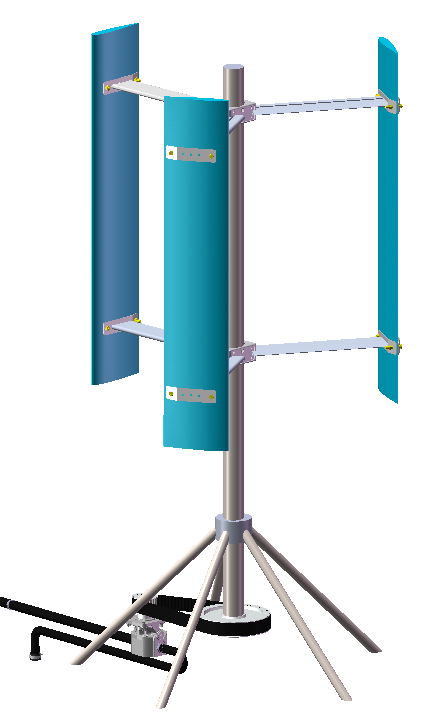
At the core of the new invention lies a turbine not known by many – the vertical axis wind turbine (VAWT). This turbine rotates around an upright axis (to visualize the movement of the turbine blades, imagine a man running around an electric pole), unlike the more familiar wind turbines, whose axis is horizontal.
Despite the prevalence of horizontal axis turbines, special VAWT blade configurations have been developed in the Technion. “The tip of the blade of a ‘normal’ wind turbine spins about 7 times faster than the wind that moves it, while our blades spin at about the same speed as the wind – that is, up to 7 times slower than traditional wind turbines,” explains David Keisar of the Faculty of Mechanical Engineering at the Technion, who conducted the research – guided by Prof. David Greenblatt – as part of his doctoral thesis at the Grand Technion Energy Program (GTEP). “Our vertical axis turbines operate well even at low wind speeds, and they are very efficient in producing energy, considering their size and rotational speed.” According to Keisar, the fact that the vertical axis turbines spin slowly makes them much quieter than the horizontal axis ones, as well as safer for birds – who can see their blades and don’t fly into them.
Keisar says that another benefit of using VAWTs is in the fact that the blades that spin are connected to a shaft spanning the whole height of the turbine – this way, any device that uses the rotational speed of the turbine – be it an electric generator or any other device – can be placed close to the ground, and not at the top of the turbine, as the horizontal axis turbines require. This fact simplifies their installation, as well as their regular operation and maintenance.
The wind turbine spins (up) and the water pump with its sensors (down). Video by David Keisar
Another advantage of VAWTs is that they can spin no matter the direction of the wind blowing at them, as opposed to horizontal axis turbines which run optimally only when they face the direction of the wind (or against the wind, according to their design).
Turbines for small-scale systems
Mentioning all of these advantages begs the question: why don’t we always use vertical axis turbines instead of the well-known horizontal axis ones? “Horizontal axis turbines are still better at generating high-power electricity, and economically they are the most efficient ones at large scales,” explains Keisar. Additionally, he says, the axis and the bearings (parts that reduce friction while spinning) of VAWTs tend to fall apart and break faster than their horizontal axis counterparts.
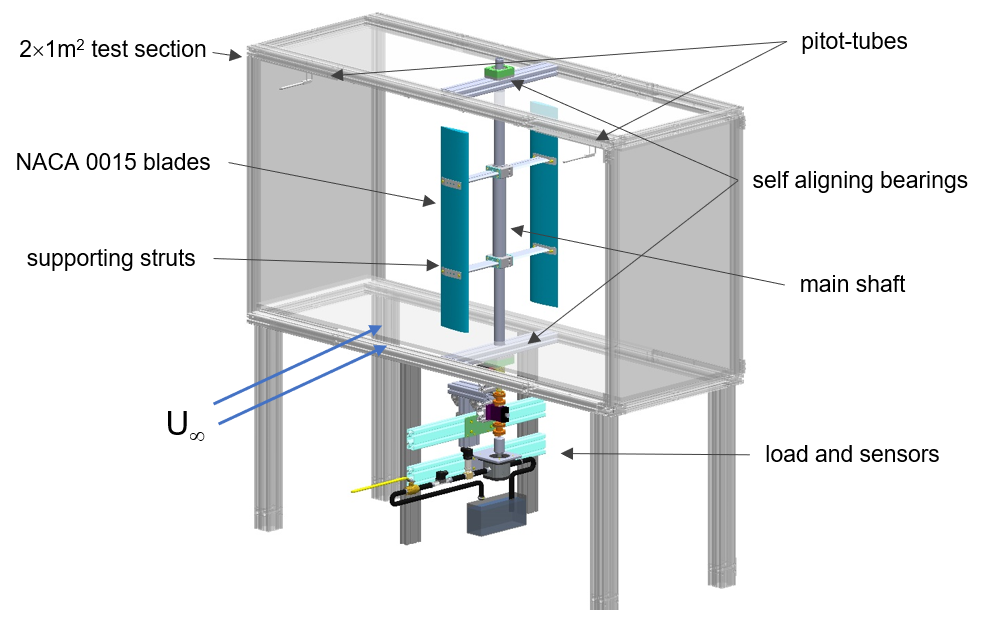
“However, this problem rises mainly when the vertical axis turbines are large,” Keisar reassures. “When small, they work well and are far more robust.” Therefore, in small systems that are meant to be used in distant places by non-professionals, the advantages of vertical axis turbines – being able to run at a low-speed wind, no matter which direction it blows, as well as their ease of installation and maintenance – make them a better solution than the horizontal axis ones.
On the drawing board
The goal of the research headed by Greenblatt was to develop a simple and small desalination system powered directly by wind energy. The researchers focused on desalinating brackish water, with a concentration of salts of up to 1 percent (where the salt concentration in seawater is more than 3 percent). “We realized that the axis of VAWT can be connected mechanically and directly to a water pump on the ground (without the need to generate electricity to run the pump, J.S.) which starts the desalination process,” recalls Keisar. That is, in such a setup, the axis that the turbine blades spin around is connected directly to an axis in the water pump. As a first step, the researchers connected a water pump to a VAWT in a wind tunnel (a large channel with a fan in one end that can blow wind at a controlled speed). They tried to see if the system could operate optimally without electronic control systems to coordinate the operation of the turbine and the pump, since such systems require electricity.
To the researchers’ dismay, the results of this first experiment were disappointing. “About 3% of the wind energy turned into hydraulic force (i.e., water pumping force) – very inefficient,” explains Keisar. “It took us time to realize what went wrong: the size of the turbine was too small for the pump, and the pump wasn’t good enough for our system.”
The turbine spins – and desalinated water flow out the tube. Video by David Keisar
Despite this difficulty, the researchers did not stop pursuing their goal: for a second experiment, a unique turbine, larger and more efficient, was developed in their lab. This turbine is 80 centimeters by one meter in size, and it uses air vortices to improve its efficiency. Additionally, using their previous results, they constructed a mathematical model that can better estimate which water pump they need. The pump pressurizes brackish water through a reverse osmosis desalination system – the main kind of system for desalination nowadays, both in Israel and around the world. Reverse osmosis involves using high pressure to drive seawater or brackish water through a partially permeable membrane: water is allowed to flow through it freely, but about 99% of the salts are blocked. After passing through the membrane, water is drinkable, as they are almost completely free of salts.
This second experiment ended with great success. “We managed to create a system that converts around 12-17 percent of the input wind energy directly into hydraulic force, for almost any wind speed and an especially wide range of salinity,” says Keisar. “It is as efficient – if not more – as generating electricity from wind energy and then converting it to hydraulic energy using an electric pump,” Keisar tells us. “For example, when wind speed is at 5 meters per second – which is its average speed at Haifa, where our lab is located – the system is capable of producing between 500 and 1000 liters of desalinated water, and removing approximately 93-98.5 percent of the salts (depending on the salinity and pressure of the water).” It is admittedly a very modest amount of water, but consider the fact that the experiment used only a small demonstration system; for a follow-up experiment, the researchers plan to build a bigger system and test it in the Negev or the Arava, for simulation of how it would function in remote places, where such a system could be used to produce fresh drinking water for communities in need.
Good news for the thirsty
This simple system developed by the researchers might be revolutionary at a global scale for its possible use by energetically-poor communities with no access to clean fresh water. According to the UN, there are about 1.2 billion people today – and according to current predictions, this number should grow to about 1.6 billion people by 2030. “Actually, the system we’ve developed works entirely without electricity – none is needed to be generated or to be drawn from an external source such as an electric grid or any energy storage system,” says Keisar. “The system is small and relatively cheap because it requires no electronic components. Being mechanical, it is also much easier to maintain – and to repair, when needed – and it can be set up and taken care of even by people who weren’t extensively trained for that purpose.
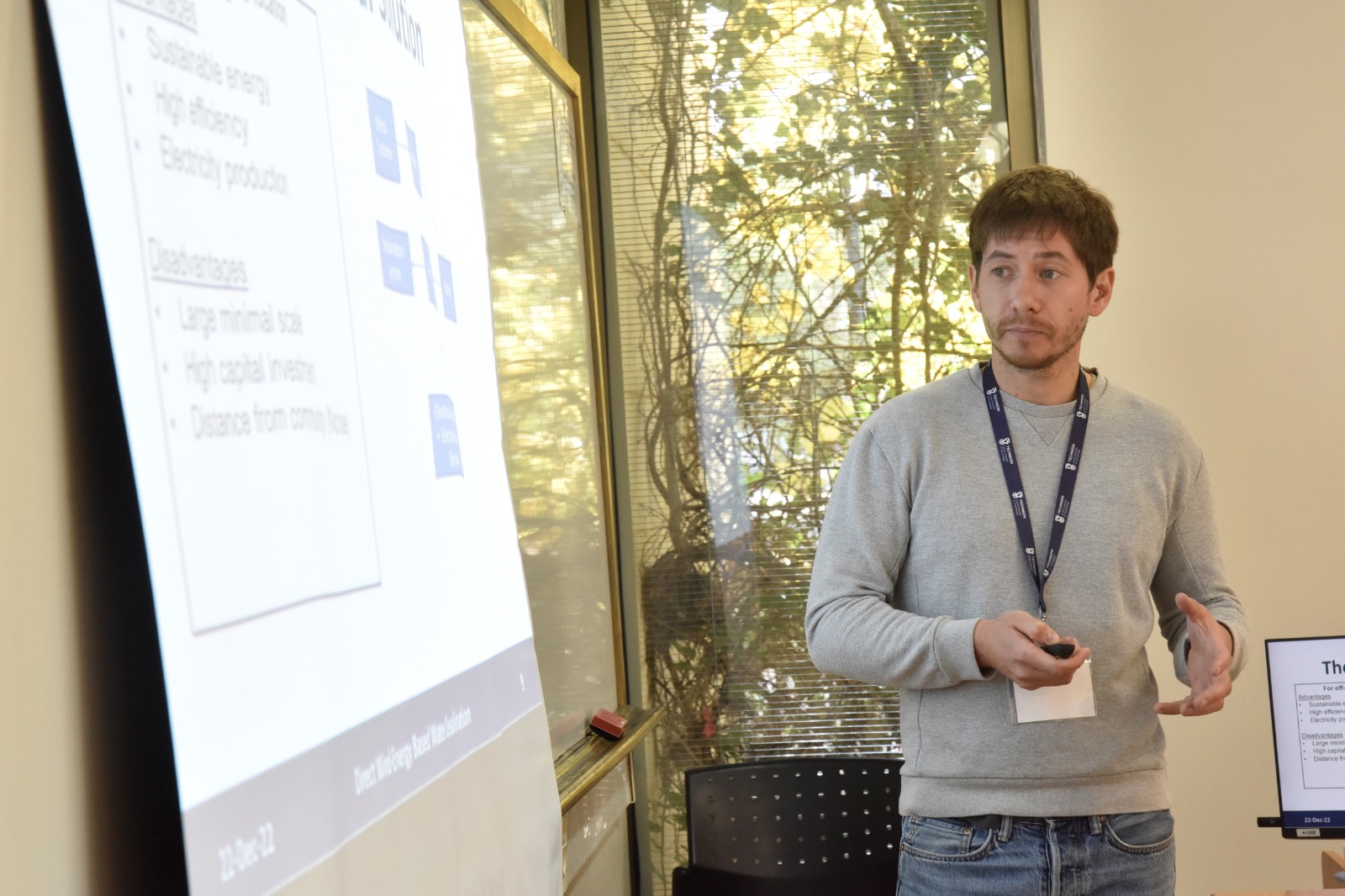
The researchers are presently patenting their system, and aiming to commercialize it. The first systems to supply fresh water to communities in need should be up and running in a few years, they hope. According to Keisar, desalination is not the only purpose these systems could serve: “they can also be used for the improvement of drinking water quality in general, as they can be connected to machines able to clean many kinds of pollution from water, thereby purifying it,” says he. “The idea is to develop different systems which combine vertical axis wind turbines with water treatment machines, all simple, cheap, and easy to manage.”
This Zavit Article was also published in Ynetnews on 17 March 2023
